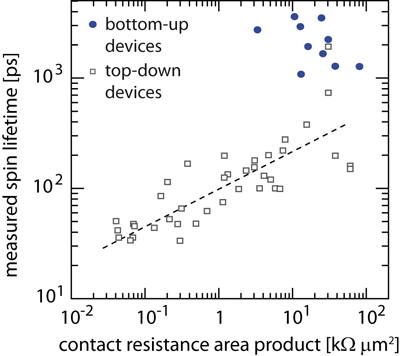Current events
Next talk on Friday in 2 days by Yeganeh Mirzanejad.
News 05.07.2025
New publication: Electric-Field-Tunable Spin−Orbit Gap in a Bilayer Graphene/WSe2 Quantum Dot
Site Content:
News 14.12.2015
New publication: Spin and charge transport in graphene-based spin transport devices with Co/MgO spin injection and spin detection electrodes

Synthetic Metals, 210 Part A, 42 (2015)
Free online access until February 2, 2016 direct download
In this review we discuss spin and charge transport properties in graphene-based single-layer and few-layer spin-valve devices. We give an overview of challenges and recent advances in the field of device fabrication and discuss two of our fabrication methods in more detail which result in distinctly different device performances. In the first class of devices, Co/MgO electrodes are directly deposited onto graphene which results in rough MgO-to-Co interfaces and favor the formation of conducting pinholes throughout the MgO layer. We show that the contact resistance area product (RcA) is a benchmark for spin transport properties as it scales with the measured spin lifetime in these devices indicating that contact-induced spin dephasing is the bottleneck for spin transport even in devices with large RcA values. In a second class of devices, Co/MgO electrodes are first patterned onto a silicon substrate. Subsequently, a graphene-hBN heterostructure is directly transferred onto these prepatterned electrodes which provides improved interface properties. This is seen by a strong enhancement of both charge and spin transport properties yielding charge carrier mobilities exceeding 20,000 cm2/(Vs) and spin lifetimes up to 3.7 ns at room temperature. We discuss several shortcomings in the determination of both quantities which complicates the analysis of both extrinsic and intrinsic spin scattering mechanisms. Furthermore, we show that contacts can be the origin of a second charge neutrality point in gate dependent resistance measurements which is influenced by the quantum capacitance of the underlying graphene layer.
